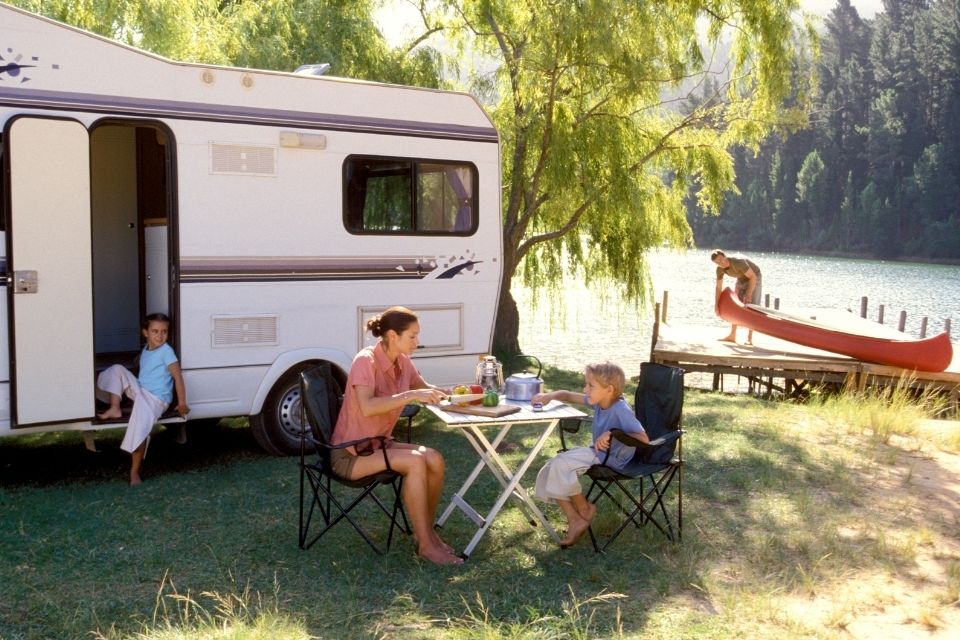Understanding RV Moisture Control
Moisture is one of the most common challenges RV owners face. Left unchecked, it can cause mold, mildew, structural damage, and make traveling less comfortable. Whether you use your RV full-time or just for weekend getaways, learning to control moisture protects your investment and keeps your RV healthier and more enjoyable.
Why Moisture is a Bigger Concern in RVs
Unlike traditional houses, RVs are compact spaces with limited ventilation. Everyday activities like cooking, showering, and even breathing release moisture into the air. Because RVs are tightly sealed to improve energy efficiency, this moisture often has nowhere to go, leading to condensation on windows, walls, and ceilings. Over time, this causes wood to rot, metal to corrode, and soft furnishings to develop musty odors.
Ventilation as the First Line of Defense
Good airflow is the most effective way to keep moisture levels under control. Roof vents, ceiling fans, and open windows allow humid air to escape while bringing in drier air. Running your bathroom fan during showers and your kitchen vent while cooking prevents steam from building up. Even slightly cracking a window on colder days helps reduce condensation. Think of ventilation as giving your RV a way to breathe.
The Role of Dehumidifiers
A portable dehumidifier is one of the best tools for RV owners. It works by removing excess moisture from the air. For smaller RVs, even a compact dehumidifier dramatically reduces condensation on windows and walls. If you spend time in humid climates, using a dehumidifier daily helps prevent mold growth and protects your interior finishes. Some owners also use moisture-absorbing crystals or desiccant packs in closets, under beds, and in storage compartments for extra protection.
Controlling Indoor Humidity While Living Comfortably
Daily habits make a big difference in moisture control. Taking shorter showers with cooler water helps reduce steam. Covering pots while cooking prevents moisture from filling the air. Drying clothes outside instead of indoors eliminates one of the biggest sources of excess humidity. Even wiping down bathroom walls after a shower helps minimize lingering dampness. These small actions, combined with ventilation and dehumidifiers, keep indoor air comfortable and dry.
Insulation and Sealing for Long-Term Protection
Insulation plays an important role in reducing condensation. When warm, moist air inside the RV hits cold surfaces, water droplets form. Proper insulation slows this process and helps maintain a consistent temperature inside. Window insulation film, thermal curtains, and foam cushions for ceiling vents all reduce the risk of condensation. At the same time, inspecting and resealing windows, doors, and roof seams prevents outside moisture from sneaking in during rainstorms.
The Importance of Routine Maintenance
Staying ahead of moisture problems means staying on top of maintenance. Regularly check around windows, doors, skylights, and roof seams for signs of leaks. If you notice soft spots on the ceiling or floor, investigate immediately to rule out hidden water damage. Cleaning air conditioning filters, inspecting the underbelly for cracks, and keeping gutters clear all contribute to better airflow and moisture prevention. Treating moisture as part of your routine upkeep ensures your RV remains safe and comfortable.
Seasonal Considerations for Moisture Control
Different seasons bring different challenges. In the summer, high humidity levels outside creep indoors, making dehumidifiers and fans essential. In colder weather, condensation from heating systems accumulates on windows and walls. Winter RVers often face the challenge of keeping interiors warm while avoiding trapped moisture. Using vent covers that allow airflow even during rain or snow and running fans during heating cycles help balance comfort and dryness year-round.
FAQs About RV Moisture Control
How can I tell if my RV has a moisture problem?
Common signs include fogged windows, musty odors, damp bedding, water stains on walls or ceilings, and visible mold or mildew. Even if the problem seems small, addressing it quickly prevents long-term damage.
Do I really need a dehumidifier if I already use vents and fans?
Fans and vents help, but they don’t remove moisture from the air. A dehumidifier lowers humidity levels, making it a valuable addition, especially in humid climates or for full-time RV living.
What’s the best way to stop condensation on RV windows?
A combination of strategies works best: running a dehumidifier, improving airflow, and using insulating window covers. Cracking a window even slightly also prevents moisture from collecting on cold glass surfaces.
Can moisture damage the structure of my RV?
Yes. Over time, moisture weakens wood framing, delaminate walls, and corrode metal components. Preventing moisture is much easier and less expensive than repairing structural damage.
Is RV moisture control only important in humid areas?
Moisture is an issue anywhere. Even in dry climates, cooking, showering, and breathing produce humidity inside the RV. Seasonal changes and temperature differences also cause condensation.
Semper Fi RV provides RV Inspections and RV services across Northern Utah. To schedule an RV inspection or other RV services, contact us.
